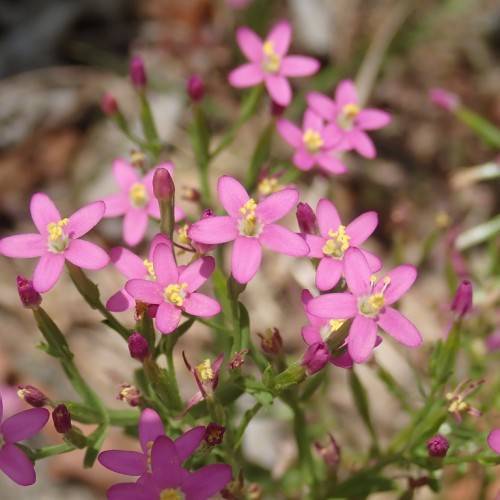
Common Centaury
Centaurium erythraea
Also Known As - European CentauryWatering:
Frequent
Hardiness Zone:
Sun:
full sun
Leaf:
Yes
Growth Rate:
Low
Drought Tolerant:
Yes
Invasive:
Yes
Care Level:
Medium
watering
Meadow Knapweed is a drought-tolerant plant, so it does not require frequent watering. However, during the plant's first year, it should be watered as often as necessary to keep the soil moist and the plant healthy. During the first few weeks, water the plant 3 times a week, and during the summer, water once or twice a week. Once the plant is established, you can reduce the frequency of watering to once every 2 weeks. Make sure to water the plant deeply, soaking the soil and getting it to the root to ensure plenty of water for the plant.
sunlight
Meadow Knapweed (Centaurea x moncktonii) requires full sun for optimal growth. If it receives partial shade, it may not flower as abundantly. The plant should be given a minimum of 6 hours of direct sunlight each day during the summer months of June, July, and August. During the other months of the year, the plant should get at least 4 hours of sunlight daily.
pruning
Meadow knapweed should be pruned in the spring and again in the fall. In the spring, prune back the dead and damaged stems to the base of the plant to encourage new growth. In the fall, cut back the stems to just above a strong bud, leaving the flowering stems intact. This will help ensure a healthy, robust bush the following spring. Properly pruned plants will have plentiful blooms the following year.
